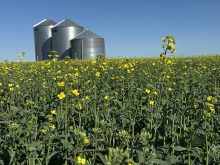SWIFT CURRENT, Sask. Ñ Slowly but surely, Saskatchewan beef producers are looking at ways to market their own cattle outside traditional methods.
Adam Anderson of AA Ranching in Swift Current and Ted Perrin of Castleland Ranch in Beechy have started finishing some of their beef on grass. Ken Hymers, also of Swift Current, has joined the Canadian Organic Livestock Association.
The numbers they market aren’t large, but they told a recent conference that producers need to follow consumer trends.
“Consumers are becoming more adventuresome,” Anderson said.
Read Also

Huge Black Sea flax crop to provide stiff competition
Russia and Kazakhstan harvested huge flax crops and will be providing stiff competition in China and the EU.
The increase in sales in the health food industry also indicates that consumers want to use food to prevent and treat certain health conditions, he added.
Perrin pointed to U.S. research that shows grass-fed beef is rich in omega three fatty acids compared to grain-fed beef and perhaps should be branded as such.
Anderson and Perrin have been selling grass-finished beef for about four years, but it’s not new. It was common practice in North America before the Second World War and as late as the early 1960s.
However, Perrin said grass-fed cattle’s yellow fat, which indicates high beta-carotene content, doesn’t fit today’s grading system.
The fat is whiter if animals are slaughtered at a younger age and he predicted grass-finished beef will be mainly sold frozen, resulting in a year-round supply of meat that looks more typical.
“Your meat should not be too different from what (consumers) are accustomed to,” said Anderson, who finishes steers on tame grass, alfalfa and native range. The beef will be available in July.
Perrin’s product, raised mainly on native grass, is available in September.
Both producers offer natural beef, considered antibiotic- and hormone-free.
Hymers’ beef goes one step further and can be certified organic because he uses organic feed.
He said organic beef is aimed at upwardly mobile consumers with greater disposable income, but the market is small.
Continuity of supply is a factor, he added.
Hymers said the European Union has recognized the Canadian Food Inspection Agency’s hormone-free program, in which producers can pay $20 a head for an accredited veterinarian to visit their farms and provide the CFIA tag.
Sixty-four western Canadian producers belong to COLA, he said.

















